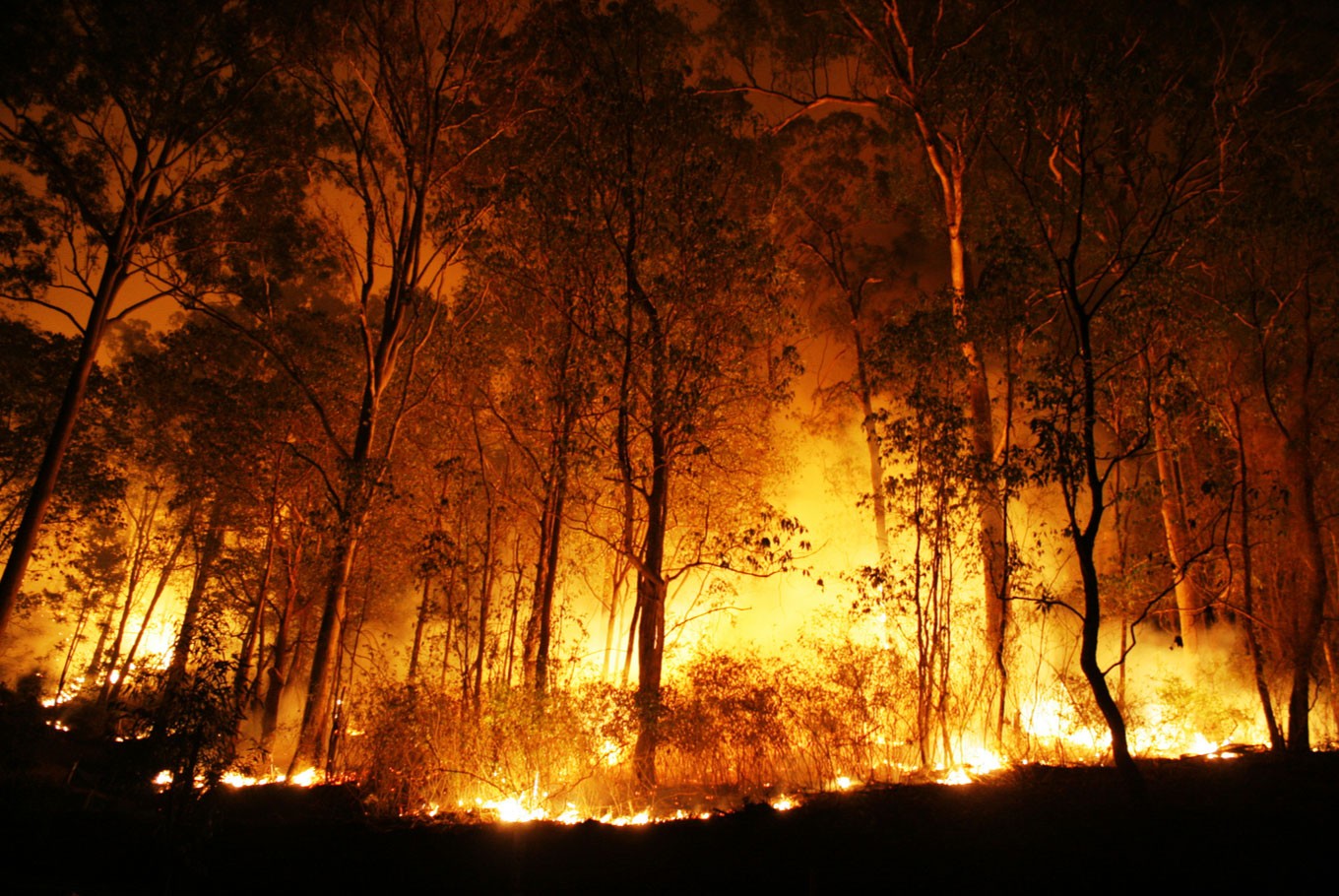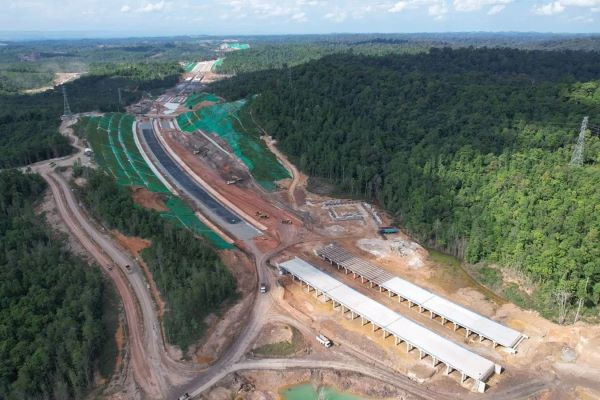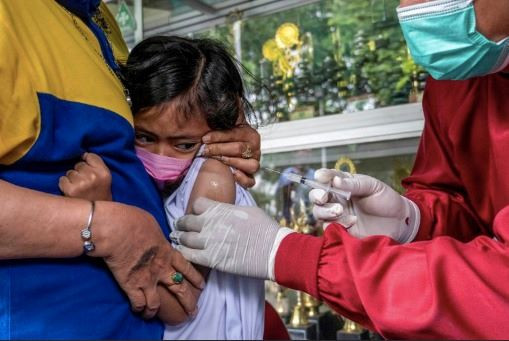No escape: Climate displacement in Indonesia
These missing links between data and displacement accounts thus raise a critical question as to what has then happened within cracks
Change Size
 Forest and peatland fires are ranked as the most economically damaging disaster, accounting for 37 percent of Indonesia’s total economic damages from disasters between 1995 to 2016. (Shutterstock/File)
Forest and peatland fires are ranked as the most economically damaging disaster, accounting for 37 percent of Indonesia’s total economic damages from disasters between 1995 to 2016. (Shutterstock/File)
A
s a country that is both prone to disasters and impacts of climate change, climate-induced displacement is not a new topic in Indonesia. As flooding, landslides, earthquakes, irregular droughts, and forest and peat fires become the recurrent events across the country, these events have significantly contributed to massive losses and damages, and severe impacts on human livelihoods.
Yet there is often a tendency to focus more on rapid-onset events such as flooding, landslides, and earthquakes. It may be because such events occurred rapidly, and their economic losses and human impacts are evident.
However, when discussing forest and peatland fires, the necessary responses seem to require more time to put into action, even though they are ranked as the most economically damaging disaster, accounting for 37 percent of Indonesia’s total economic damages from disasters between 1995 to 2016 -- after earthquakes (24 percent) and flooding (23 percent), according to data from the Emergency Events Database (EM-DAT), a global database on natural and technological disasters.
The severe disaster impacts to humans, particularly forced displacements caused by forest-peat fires and haze crisis, have not yet gained as much attention across academics and policymaking processes in Indonesia. A good indication is the gap of displacement data and the fragmented coverage of human impacts caused by fire and haze events.
While official displacement data on other disasters such as flooding, earthquakes, tsunami, and tornadoes have been available since 1970s at the website of Indonesia’s National Disaster Management Agency (BNPB), displacement data for forest and peat fires has only been available from 2003 to 2016, though the major events occurred since 1980. Moreover, stories of affected populations who have experienced fire and haze events since then tend to be very fragmented, covered by media only.
These missing links between data and displacement accounts thus raise a critical question as to what has then happened within cracks.
The year 2015 was probably Kalimantan and Sumatra’s darkest year, as the regions experienced a prolonged thick haze period due to forest and peatland fires. The fire and haze affected over 72 million people across the regions and in neighboring countries. According to the Pollutant Standard Index (PSI), the worst-affected areas reached around 2,000 mgram/m3, far exceeding 300 mgram/m3which is considered dangerous to human health. The haze caused over 409,000 cases of respiratory ailments, in which 19 people died.
Many fled in search of clean air. Some had to move several times to different locations, as the haze was widely widespread due to wind directions.
In 2013 and earlier in 1997-1998, the same tragedies occurred in Kalimantan and Sumatra. In 1997-1998, the haze killed 527 people. Despite calls for mass evacuations in Rengat city in Riau province in Sumatra during the thick haze period, the plan was abandoned as the situation was perceived to have improved with changing wind directions. In 2013, fire and haze crisis broke out in January mainly affecting Riau. Since June 2013, nearly 50,000 Indonesians have suffered from respiratory infections, eye diseases and coughs. Children become easy targets of this hazardous haze.
Yet many however decided to remain put. The ones more severely affected were among poor communities who often lack facilities such as air conditioning which help filter the air. Those who lack financial means or relatives in less affected areas “preferred” to remain in their homes, fearing loss of their main source of incomes or jobs. Kartika Sari, a mother who had to evacuate her five-year old daughter to another area, was one resident who said fears among her friends and colleagues were mainly related to losing one’s source of income if they left their area of residence.
The government is, indeed, in no position to force people to move out of their houses. However, it is their responsibility to dig deeper to address the issues by exploring: (a) why the people do not want to leave their places; (b) how to establish and to distribute risk-informed information and awareness thoroughly to all segments of populations in a language that can easily be grasped. In doing so, centralized, interoperable data infrastructure on losses and damages, human impacts such as displacement should be of utmost priority.
As policymakers frequently rely only on available data and information to draft policies and regulations and to set their priorities and agenda, without comprehensive data and information regarding fire and haze-related displacements, displacement issues can be overlooked.
Additionally, highlighting climate displacement cases can also be a critical, first catalyst to build public and policymakers’ awareness about the severity of the fire events and haze crisis and inaction to these cases. Economic loss and damages without underlining displacement cases and stories are just like a person with a name, without a face. Thus, centralized data on loss and damages, displacement and focus on displacement stories should go hand in hand.
Indonesia’s haze tragedy should be a warning example that resembles a possible future tragedy where clean air is no longer available and humans are acutely trapped by their own irresponsible activities -- though the most painful fact of all is that those affected are often not the ones responsible to such tragedy.
***
The writer is a Master’s degree student in human rights and humanitarian action at Sciences Po Paris. She focuses on the link between human rights and climate change, and the resulting displacements. The data used in the piece was derived from the writer’s article in The State of Environmental Migration 2017 published by the Presses Universitaires de Liège.
---------------
We are looking for information, opinions, and in-depth analysis from experts or scholars in a variety of fields. We choose articles based on facts or opinions about general news, as well as quality analysis and commentary about Indonesia or international events. Send your piece to academia@jakpost.com.








